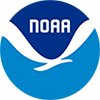| |
So extensive and dangerous a work
During the first IPY eleven nations combined to establish fourteen principal research stations spread across the Polar Regions; twelve were located in the Arctic (see map), along with at least 13 auxiliary stations. Some 700 men incurred the dangers of Arctic service to establish and relieve these stations between 1881 and 1884. Leading geophysical observatories around the world also contributed to the coordinated research program of the IPY.
Sanguine hopes
By 1884 the field program of the first IPY was finished, but the difficult work of reducing, analyzing and publishing the results was just beginning. Greely (1886) wrote, “The scientific work of these stations must be justly measured by the final result." In the end, no fundamental discoveries were made as a result of the first IPY. The heart of the research program devised by Weyprecht was the coordinated program of observation, but these data so painstakingly acquired were never fully utilized. Each nation published their observations independently and the International Polar Commission subsequently dissolved. Arktowski (1931) observed: “It may be that if the publication, and above all the discussion of the observations had been left to a central office, possibly international, the scientific level of the work accomplished would have been better appreciated.” The potential benefit of the coordinated program envisioned by Weyprecht was lost, and the first IPY was thus reduced to a series of interesting but merely concomitant expeditions.
|
| |
Members of the
Fourth International Polar Conference
Vienna 1884.
From left to right (top): Paulson, Ekholm, Steen, Cora, Börgen, Dawson, Ray, Snellen, Wijkander, Wohlgemuth, Payen, Muller; (bottom): Lenz, Giese, Scott, Mascart, Wild, Wilczek, Mohn, Neumayer.
Note: According to Heathcote and Armitage, from whose report this photo is taken, the identification of Cora, Dawson, Payen, and Giese could not be confirmed.
More - |
|

